TEXT AND PHOTOGRAPHS BY JASHASWI GHOSH
Calcutta, India
My paternal family hails from East Bengal or Bangladesh, as it is known today. Stories of that land have filled my childhood, along with the second-hand memories of a home I never knew, and people who though I yearned to know, were only part of my family’s recollections. One such person was my great great grandmother – Bourani Sarojbala Debi, or BuroMaa as she was affectionately known. BuroMaa was married at the young age of twelve, a custom then prevalent even amongst the landed aristocracy, to my great great grandfather Kumar Prahlad Ghosh – who was twenty at the time – and she then assumed charge of the household of the Mulghar zamindars.
The zamindari in Mulghar was based in the then Jessore district (present-day Khulna Division, Bangladesh), part of the Bengal Presidency in British India. Being erstwhile dewans of the Krishnanagar and Jessore Districts under the British East India Company, the zamindars of Mulghar had amassed considerable wealth and were known for their strong focus on education and learning, with a particular emphasis on the education of women. The young Sarojbala Debi thus, settled into a life which on one hand, was deeply rooted in local traditions, and on the other, was illuminated with the bright light of western education and philosophy. This atmosphere prepared her for the role of an astute matriarch – one that she had to assume upon the untimely passing away of her husband.
My father always emphasized that BuroMaa was the heartbeat of the family and work – she looked after the administrative and economic welfare of the zamindari till the time the family formally shifted to Calcutta around 1949. In fact, one of the last major celebrations in the Mulghar house was my grandparents’ wedding in 1946. And since I never met my great great grandmother, my relationship with her has been forged from the fond memories of family members who knew her and through objects which belonged to her. One such prized inheritance is her nakshi kantha.

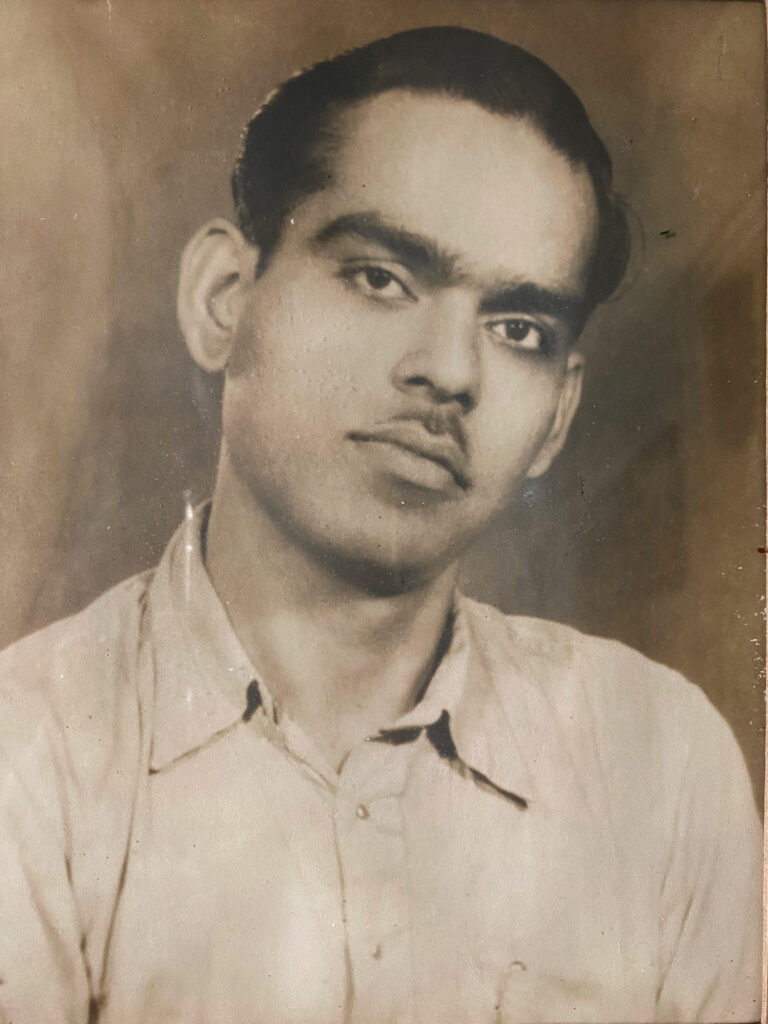
Those who are well-versed with the handloom and rich embroidery styles of the Indian sub-continent will know about the katha stitch – a type of embroidery style which developed predominantly in eastern regions of Undivided Bengal. The word kantha means quilt and nakshi means embroidery or design. So nakshi kantha was essentially a simple and thin quilt, made by stacking layers of old sarees and/ or dhotis together. The thread used for the embroidery on these kanthas was also taken from sarees or other dress material. In fact, it can be considered an indigenous way in which women of the region both recycled their old clothes and expressed artistic inclinations – quite unknowingly giving rise to a new style of embroidery. It is also a rather laborious task, which involves painstakingly separating threads from older sarees and then using them to stitch these intricate patterns. Thus, each kantha can take several months to stitch, as it often did.
For BuroMaa, suchikormo or the art of embroidery was a mechanism to express herself – a symbolic language of love and repose, often suppressed under the heavy burden of responsibilities that she carried. Suchikormo was a very integral part of a Bengali woman’s life. It was the preferred manner in which several women spent their afternoons, and I have heard that on several afternoons, when most members of the zenana prepared for their afternoon siesta, BuroMaa would be found busy with her stitching frame and tools, embroidering her thoughts into a cloth canvas.
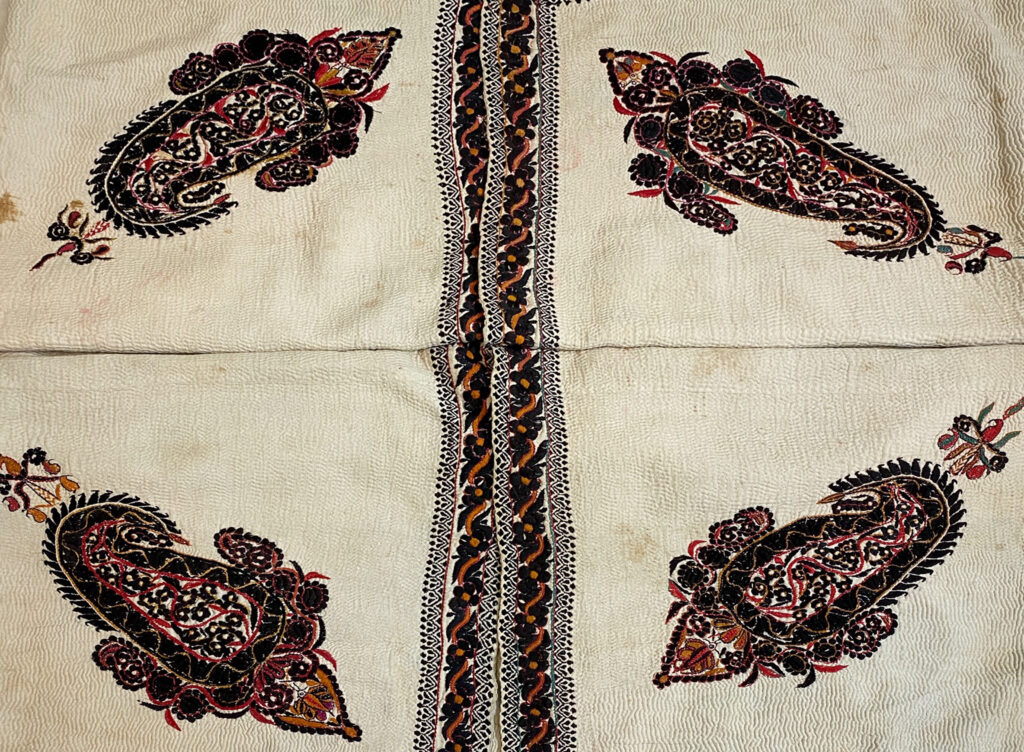
Our heirloom nakshi kantha was made by BuroMaa for her eldest grandchild -my grandfather, Shri Tara Pada Ghosh. BuroMaa doted on him; not only did she personally train him inthe family business but also instilled in him her own admiration for literature, art and philosophy. Thus, the kantha can be seen as a material manifestation of her love and adoration for him.
The embroidery offers a lens into her mind and even a cursory glance will show that this kantha lacks the ordinary components like religious symbols or local flora and fauna which adorns other kanthas. Instead, it boasts of aari embroidery – a type of design which derives its name from the hindi word meaning ‘hook’. We can note that unlike the standard kantha pieces, which start out with a central design or pattern, and then spread out into the four corners, this particular piece has four paisley designs in aari – reminiscent almost of Kashmiri shawls – on the four corners, and is gilded with beautiful paar-tola embroidery in running stitch to appear like a woven textile, along the border. Each paisley is inlaid with entwined flowers, and is further crowned with a line of delicate aari work to complete it. With over 4 x 6 feet in dimension, the kantha is so adorned with embroidery that it resembles more of a shawl than a quilt. Ordinarily, in Hindu households of the region, kantha quilts were adorned with religious iconography and mythological scenes. Whereas, in areas like the Fakirhat region in present-day Bangladesh, there was heavy Islamic and persian influence since the Mughal era, which also found its way into textiles like kantha. The fact that this kantha is embroidered with a marriage of the two styles shows the secular and almost cosmopolitan outlook that BuroMaa possessed.
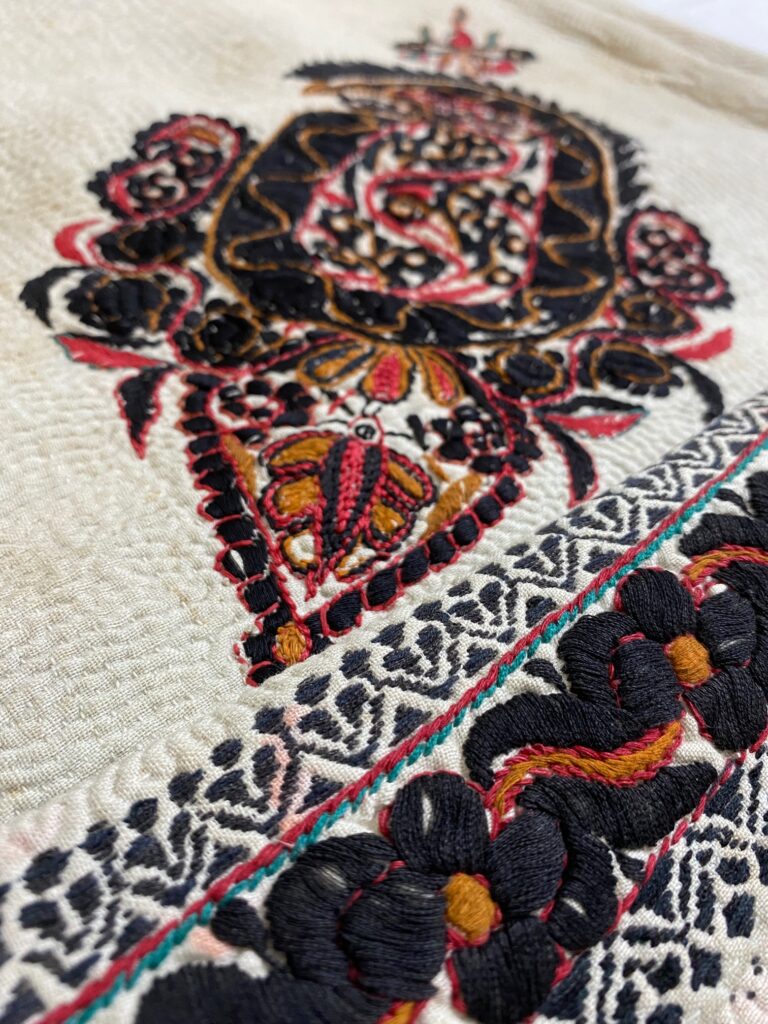
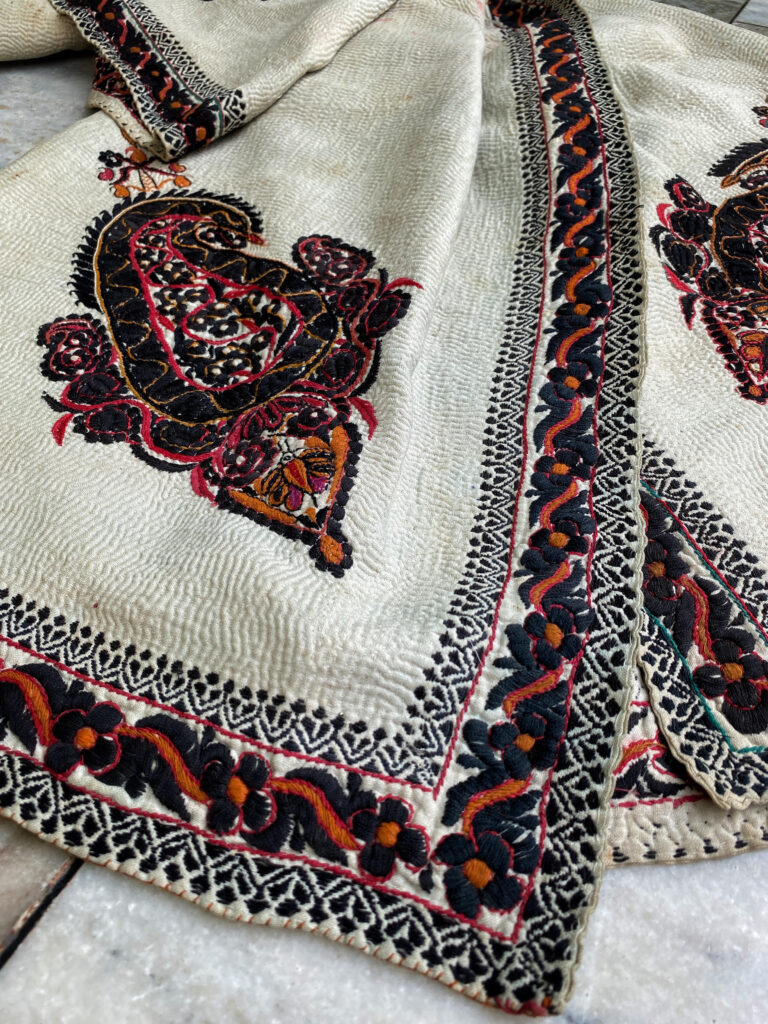

In keeping with the tradition of katha-making, the threads used were primarily sourced from her own sarees. The prominence and widespread use of the black thread is testament to the fact that being a widow, she would have mostly worn white Tangail sarees with black threadwork, rather than threads of vibrant colours like red or orange. In some places, we can still see the outlines she would have made with black lead pencil before committing to stitching needle to cloth, and it’s almost as if we can still feel her touch. These are the smaller imperfections that make the piece even more personal for me, make an ancestor more tangible than mere memory.
Over the years, the kantha has lost it’s original white colour, and the cloth has adopted a more off-white hue, with patches and stains from the time it was used. But the cloth is majorly unharmed and the patterns are intact. It is still soft to touch, like a hug from a loved one. Wrapped in muslin cloth, the kantha has been carefully preserved for years – just how it was carried across the border from East Bengal into West, as my family left their motherland behind and stepped onto a new land that they would eventually make home.
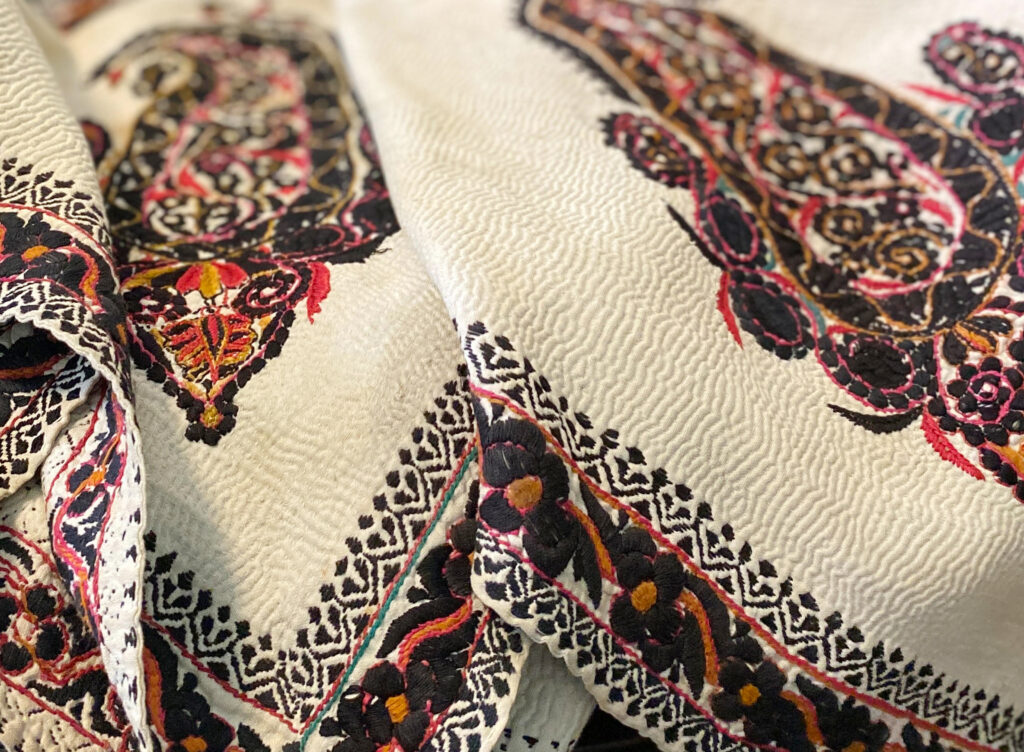
BuroMaa was very reluctant to leave Mulghar, but was finally forced to leave amidst growing religious tensions in the Fakirhat region of Khulna in 1949, two years after Partition. She carried with her an urn full of soil from Mulghar, a land she called her Patir bhite, meaning her husband’s house, and vowed that she would, one day, return. That urn containing the soil was eventually placed in our puja room and worshipped everyday. It is sad that she could not fulfil her promise of returning to Mulghar and passed away in Calcutta in 1963.
BuroMaa always stressed that we must hold onto our traditions, because that is what gives us our identity. This teaching was strongly instilled in her great grandson, my father, who in turn instilled the same it me. I believe this is what makes me feel like a part of a continuum and creates the framework of my identity.
